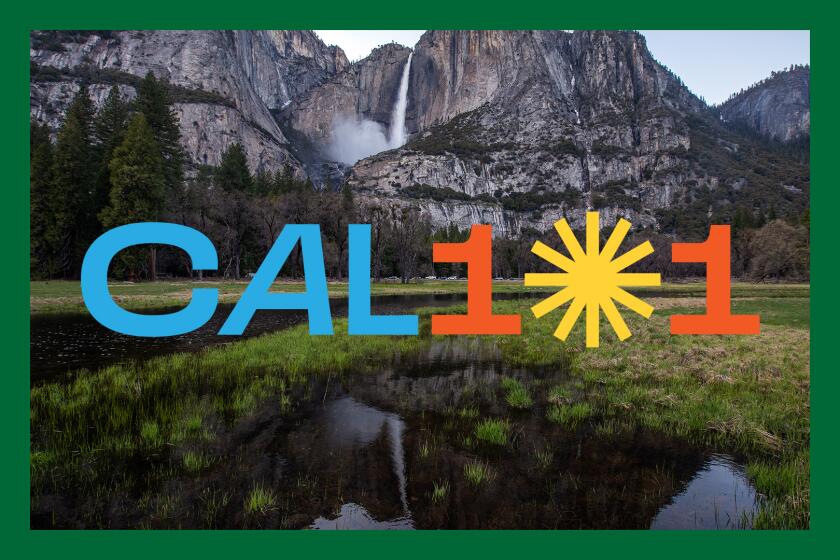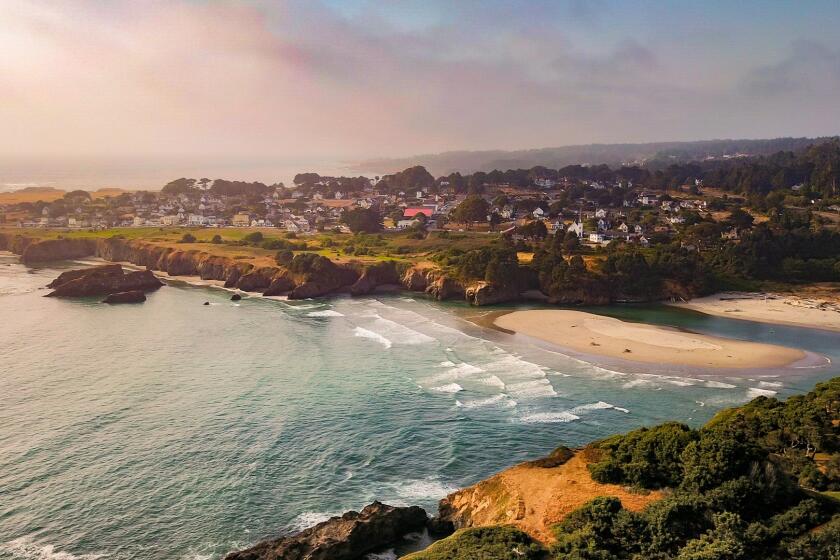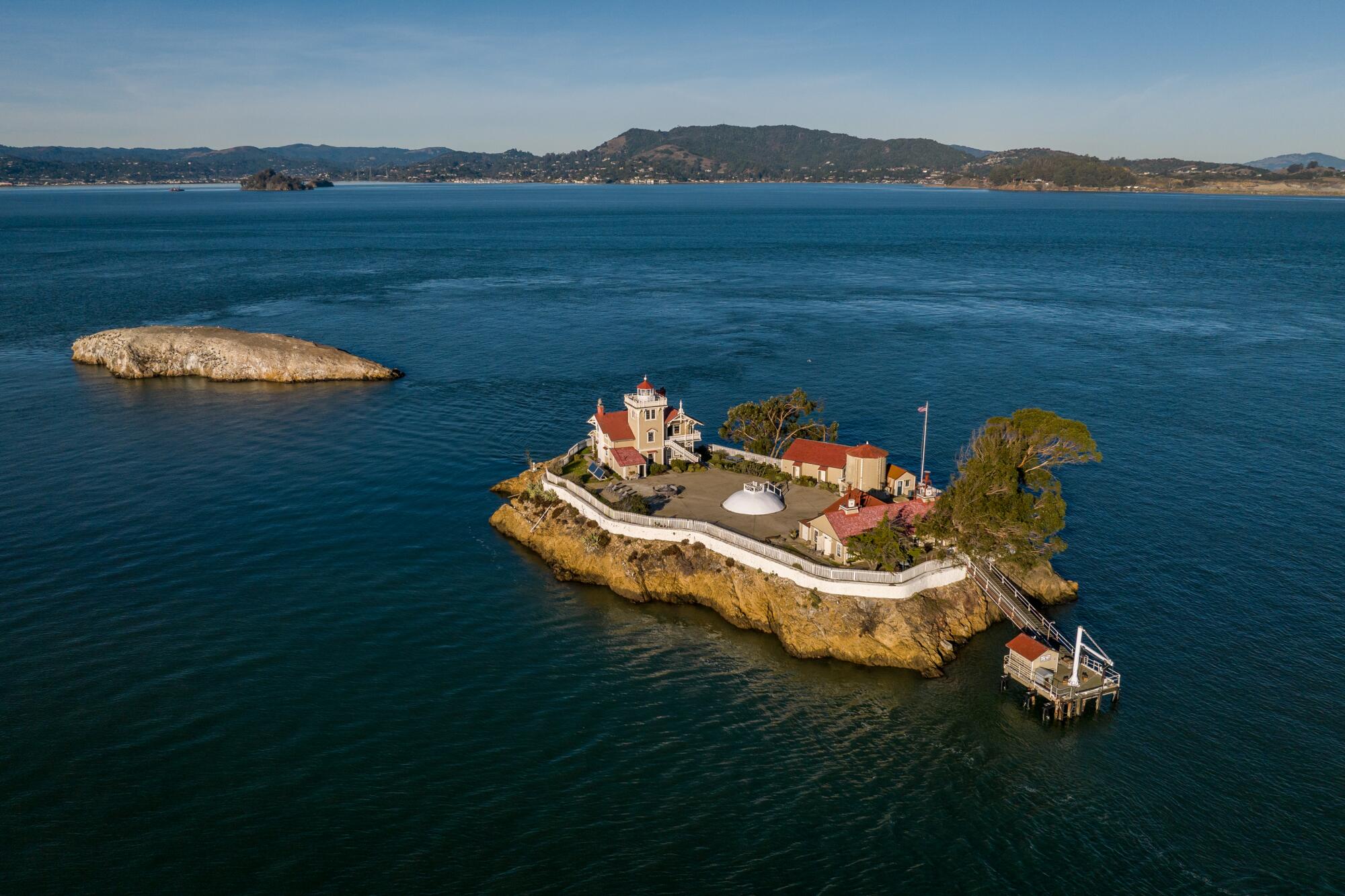
- Share via
You might be reluctant to stay at a $475-a-night inn that warns of flashing lights and foghorns throughout the night, or bans one-night guests from bathing, or requires that you be ready to climb a ladder above roiling seas.
But then you hear those four words:
Lighthouse on an island.
The East Brother Light Station is a compound of three buildings on a ¾-acre island near the eastern shore of San Francisco Bay. The main building is a four-bedroom 1873 Victorian home, topped by a beacon you can see from up to 13 miles off. And all of those bedrooms are rentable by the night, with a fancy dinner and breakfast included.
In December, I booked a night and made my way to Point San Pablo Harbor in Richmond, 20 miles north of San Francisco.
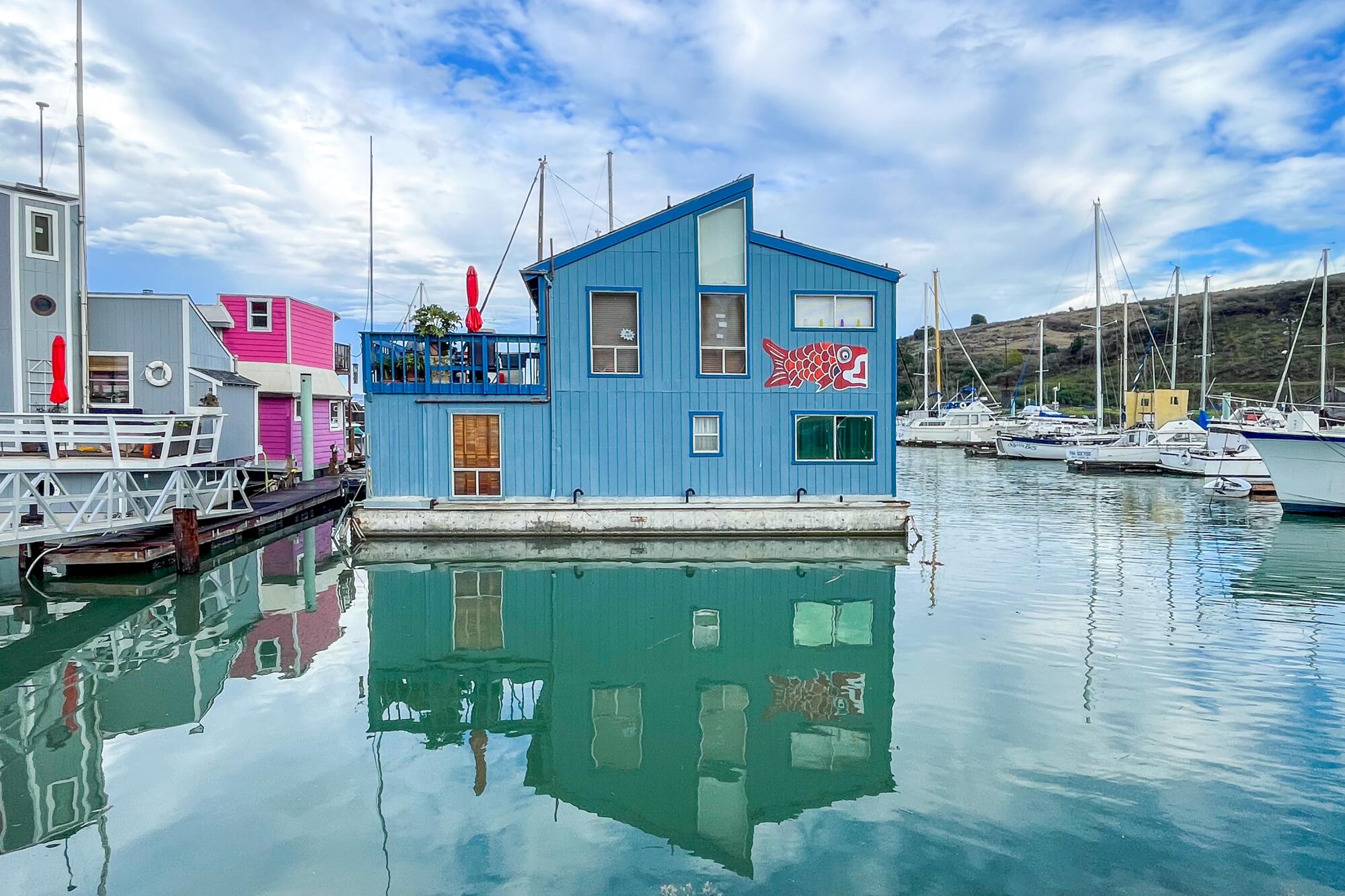
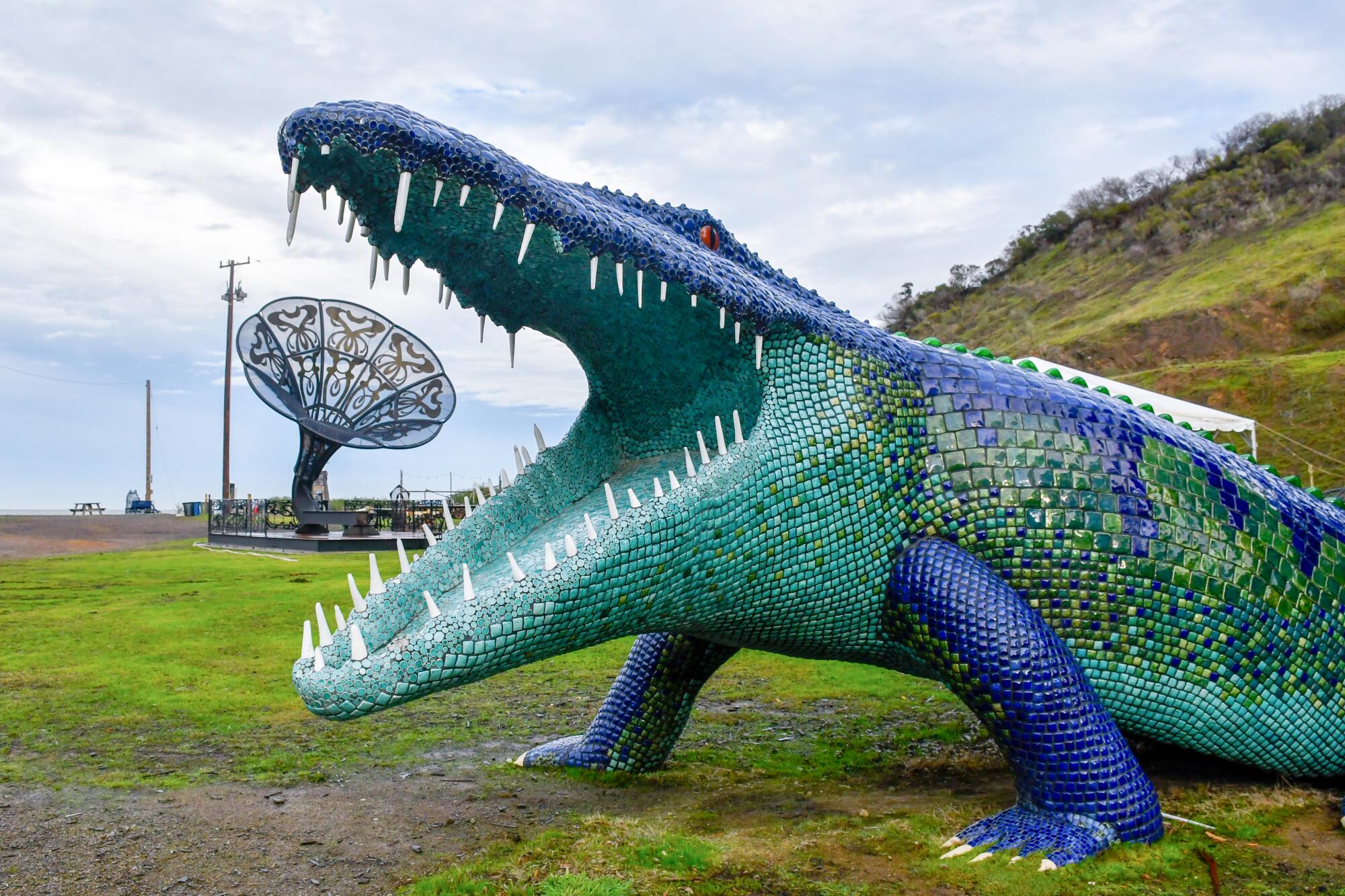
The first surprise was the crocodile. When you follow the two-lane approach road, you pass a few miles of mostly idle postindustrial waterfront, climb a hill, then descend to the harbor, where you are greeted by a 40-foot-long steel-and-ceramic crocodile, jaws open wide.
Nearby stands a Victrola-style trumpet tall enough to serenade Godzilla. Also a hippo-sized cat, a possible altar and several other large, mysterious sculptural objects, neighbored by a few yurts, a pen full of goats and a few dozen houseboats in the marina — rustic, artsy houseboats, boldly painted, with a pirate vibe.
At the base of the dock, a rustic patio restaurant called the Sailing Goat was serving lunch. In fact, I was gulping some of the Sailing Goat’s excellent clam chowder when my innkeepers’ 22-foot boat puttered up to the dock.
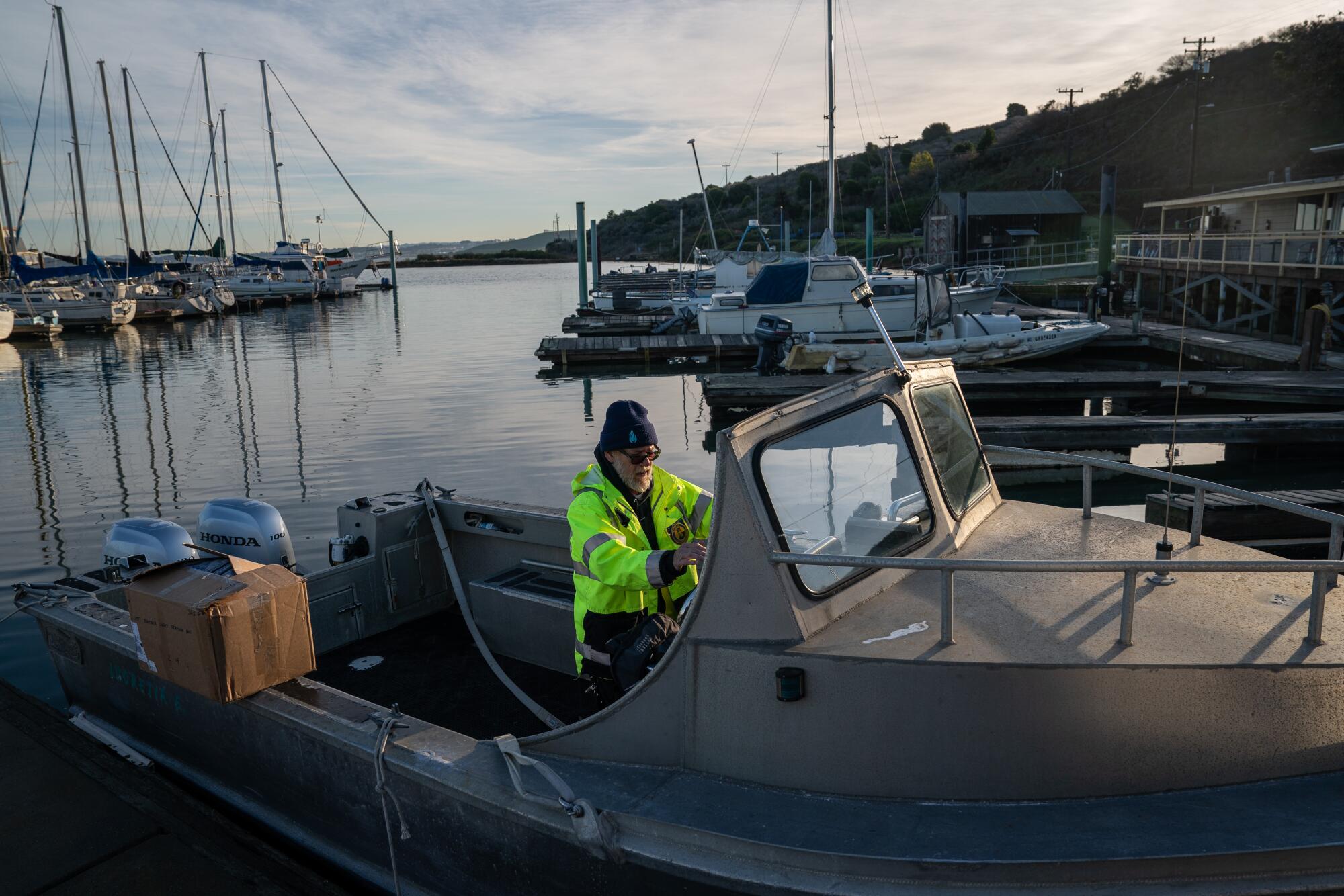
The 10-minute ride to the old lighthouse
Dre and Charity Elmore, both newcomers to California, started work in early 2023 as keepers of the East Brother Light Station Bed & Breakfast, a gig nearly as intriguing as the lighthouse itself.
Bundled in rain gear and eager to get back to their island before a downpour hit the launch, the two quickly embarked me and my overnight bag for the trip to the island.
A beach made of kaleidoscopic pebbles. A desert roadhouse with a world-class license plate collection. Medleys of irresistible waterfalls. The last grand train station in America. If you’re looking for the gold of the Golden State, let us be your guide.
Over the whine of the motor, Dre Elmore explained that many of the houseboat people seem to be live-aboard artists and musicians. As for the sculptures?
“From Burning Man,” he said.
On the quarter-mile ride to the island, the Elmores told me I’d be the only guest for the evening — others had canceled because of illness. Then they gave me the inn’s backstory.
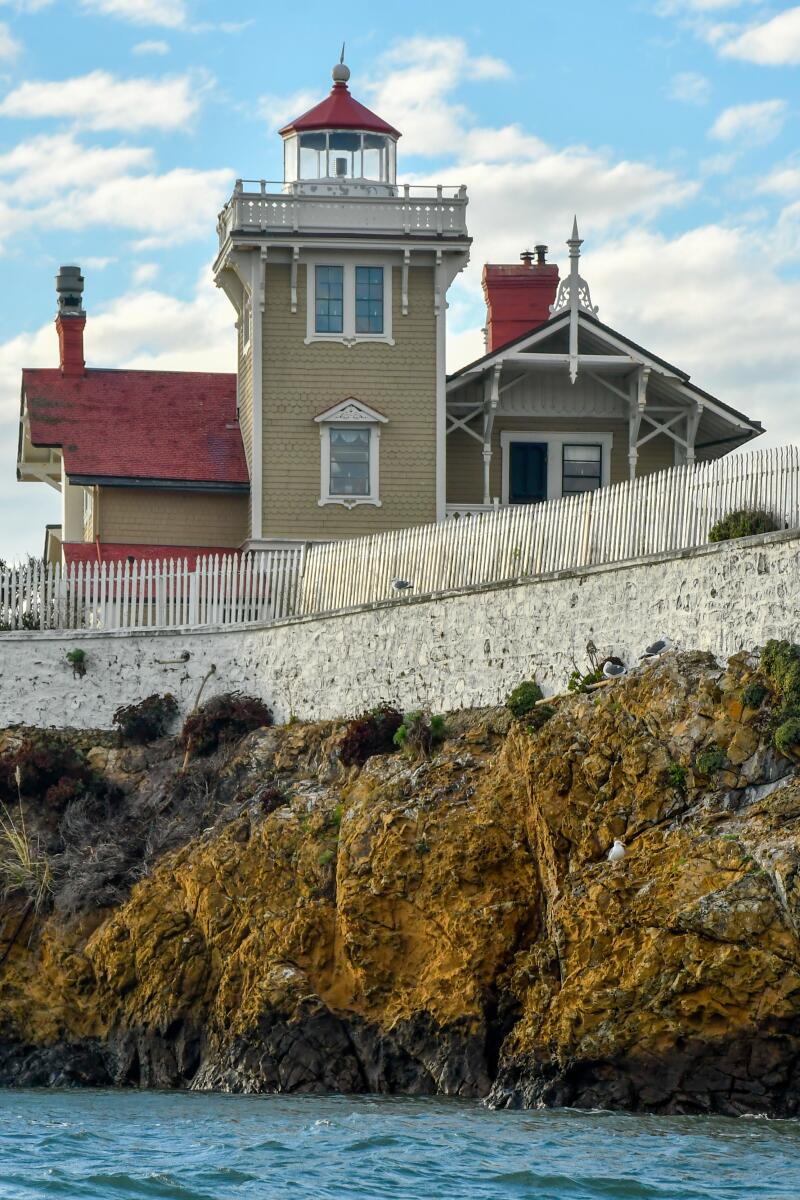
The East Brother Light Station B&B stands on a tiny island in San Francisco Bay. Guests arrive by boat. (Christopher Reynolds / Los Angeles Times)
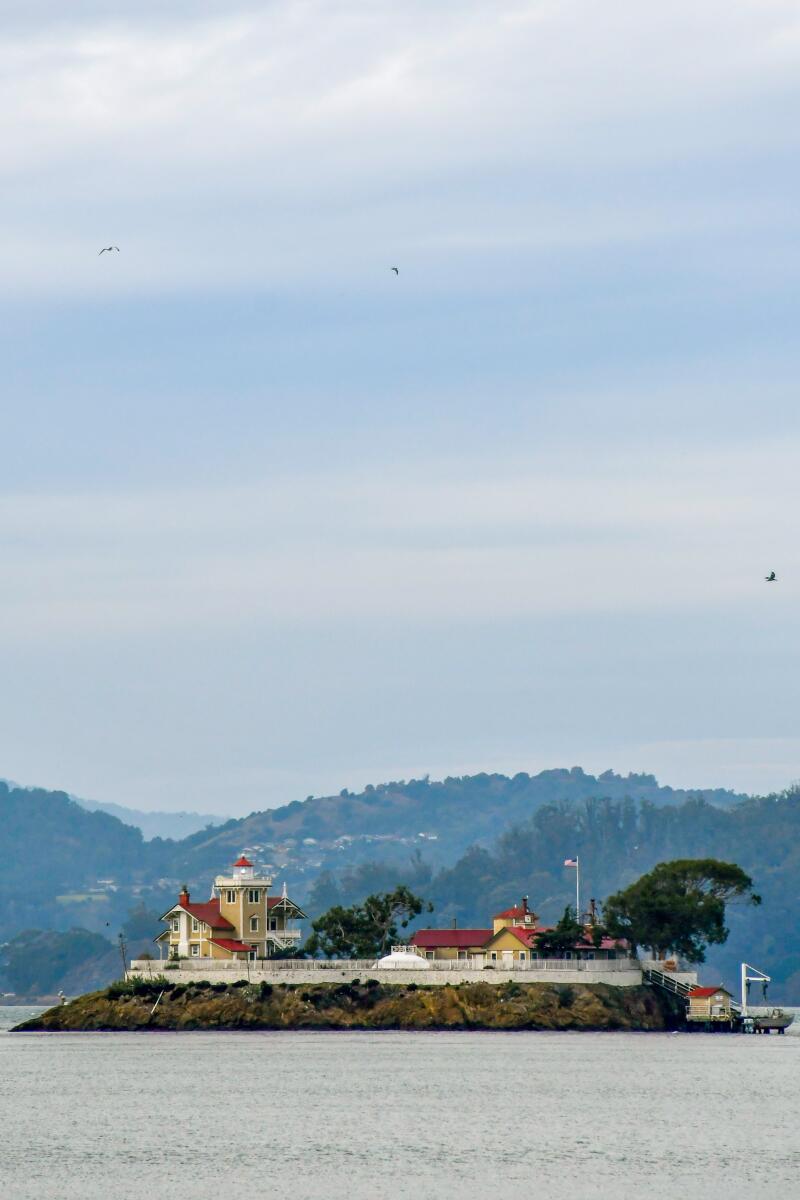
East Brother Island, neighbored by unbuilt West Brother Island, is in San Pablo Straight, where San Francisco Bay and San Pablo Bay meet. (Christopher Reynolds / Los Angeles Times)
From 1873 until the 1960s, East Brother Island was home to a manned lighthouse, using its beacon and horn to guide ships through the often-foggy strait that connects San Francisco Bay to San Pablo Bay.
Once automation arrived, the Coast Guard was ready to tear down the old keepers’ residence. That’s when Richmond’s preservationists rose up.
First they got the light station added to the National Register of Historic Places. Then they launched a campaign to restore the compound and run the keepers’ residence as a bed-and-breakfast. It would be a nonprofit operation, with proceeds paying for maintenance. The inn opened in 1980, renting two rooms.
There have been plenty of headwinds since then, including the pandemic, a damaged power cable and all the material woes that come with so much salty air and water. But the inn has grown to five rooms in the historic compound, open four nights a week.
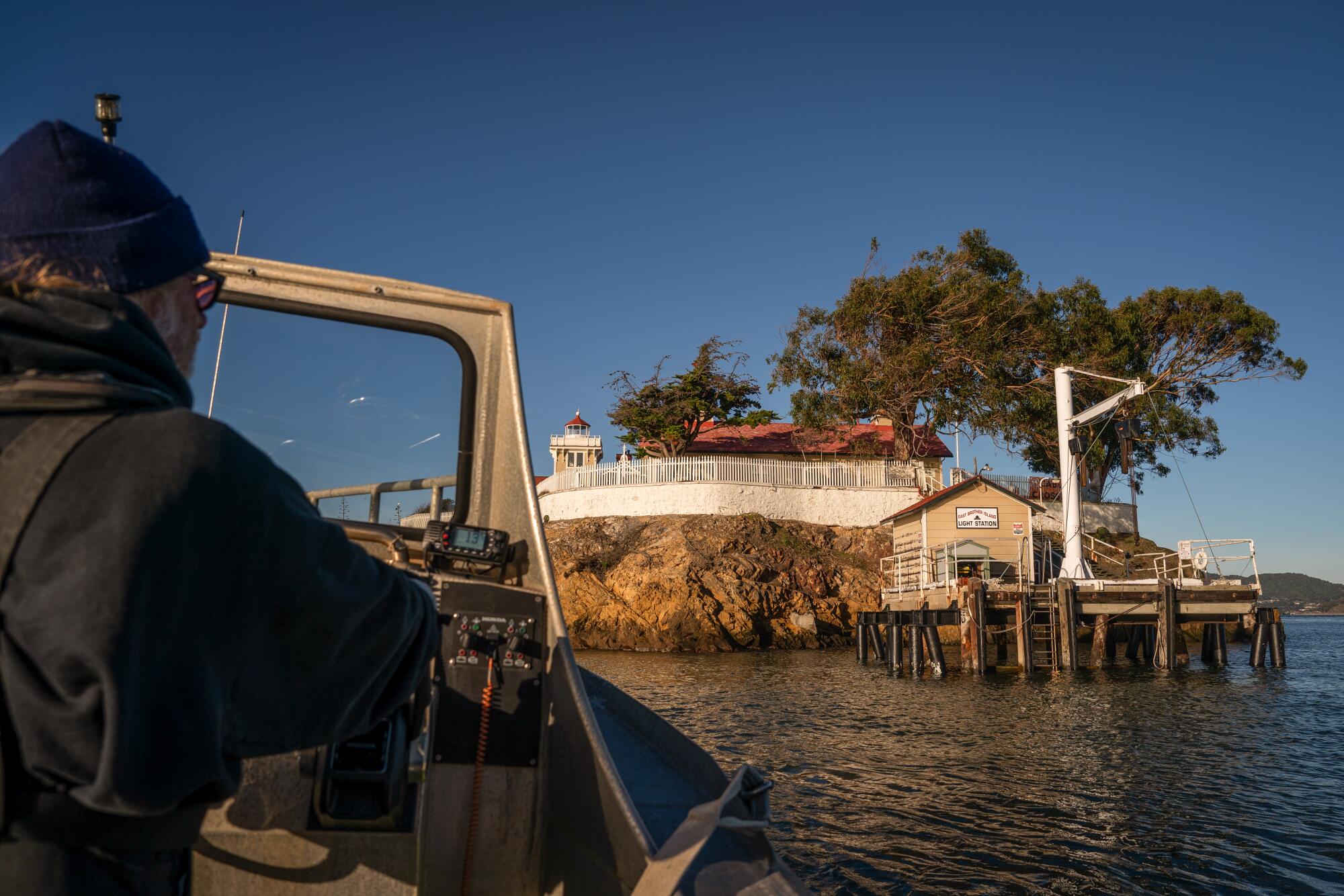
Many guests are locals who have always wondered about this odd little island. Others are lighthouse aficionados who roam this country’s coasts, getting their U.S. Lighthouse Society passports stamped. (The last active lighthouse keeper in the U.S., Sally Snowman at Boston Light Beacon, retired in December, but those aficionados still have about 850 active and retired lighthouses to visit and admire.)
As our boat neared the light station’s pier, it became clear why this is not a destination for everyone. As the inn’s website warns, guests must be able to climb 4 to 12 feet up a ladder (depending on the tide) from bobbing boat to dock. Meanwhile, your innkeepers have to heave your luggage up from the boat.
It’s best to pack light. And once you’re on the island, expect a vibe that’s less Burning Man, more L.L. Bean.
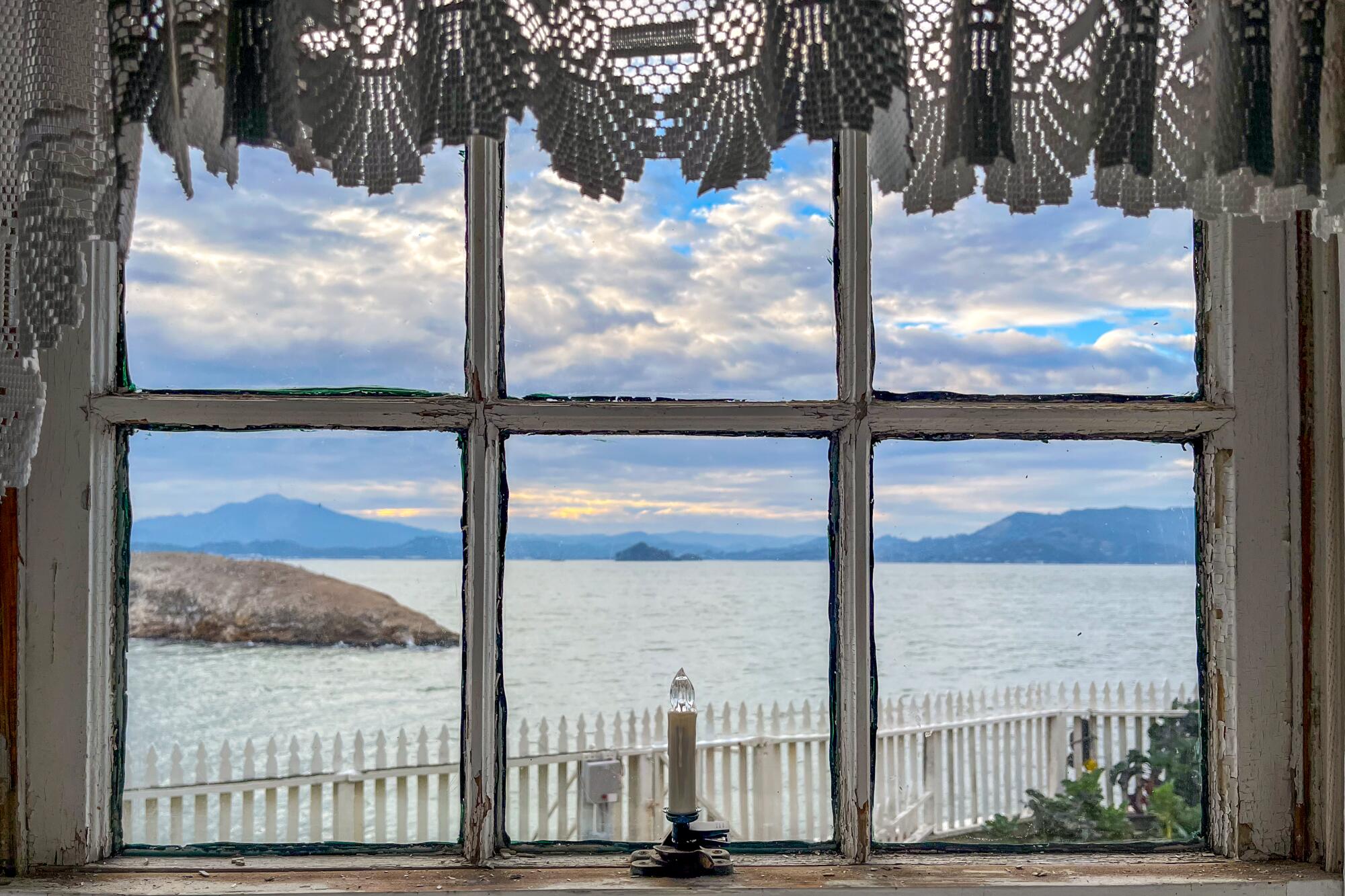
Visitors can roam. Or buy out the island.
The compound is surrounded by a white picket fence, as if this were just another slice of residential Americana. Charity Elmore leads guests on a tour that advances from the inn’s stately rooms — ready for an Agatha Christie mystery to break out at any moment — to the lighthouse tower and widow’s walk up top.
“This, right here, is the Lantern Room. That is the actual light that flashes on and off every five seconds,” Charity told me as the beacon blazed, darkened and blazed again. “It lets all the boats in the Bay Area know that we’re out here.”
The San Francisco and Marin rooms upstairs, which have commanding views, private bathrooms and cost $525, are the most popular among first-timers. I paid $475 to stay downstairs in the West Brother Room, which has a slightly less commanding view and shares a bathroom.
The Northern California destination is lined with charming seaside villages, lush pygmy forests and sea caves arched over blue-green waters.
If you’re a boat person who savors the faint scent of diesel, however, you’ll want to book Walter’s Room, a small bedroom and sitting room in the fog signal building. The bathroom is 25 feet away, but a barn-style door opens to a patio and spectacular view and there are no shared walls.
Then there’s the splurge option: You rent the whole inn for a $2,500 “house party” — room for 10 to 12 people, potentially including children, who are otherwise not allowed. That happens two or three times a month.
There are a few other lighthouse lodgings on the West Coast, including the hostel at Pigeon Point in Pescadero and the fancy B&B at Heceta Head near Yachats in Oregon. But where else on the West Coast can you buy out an island?
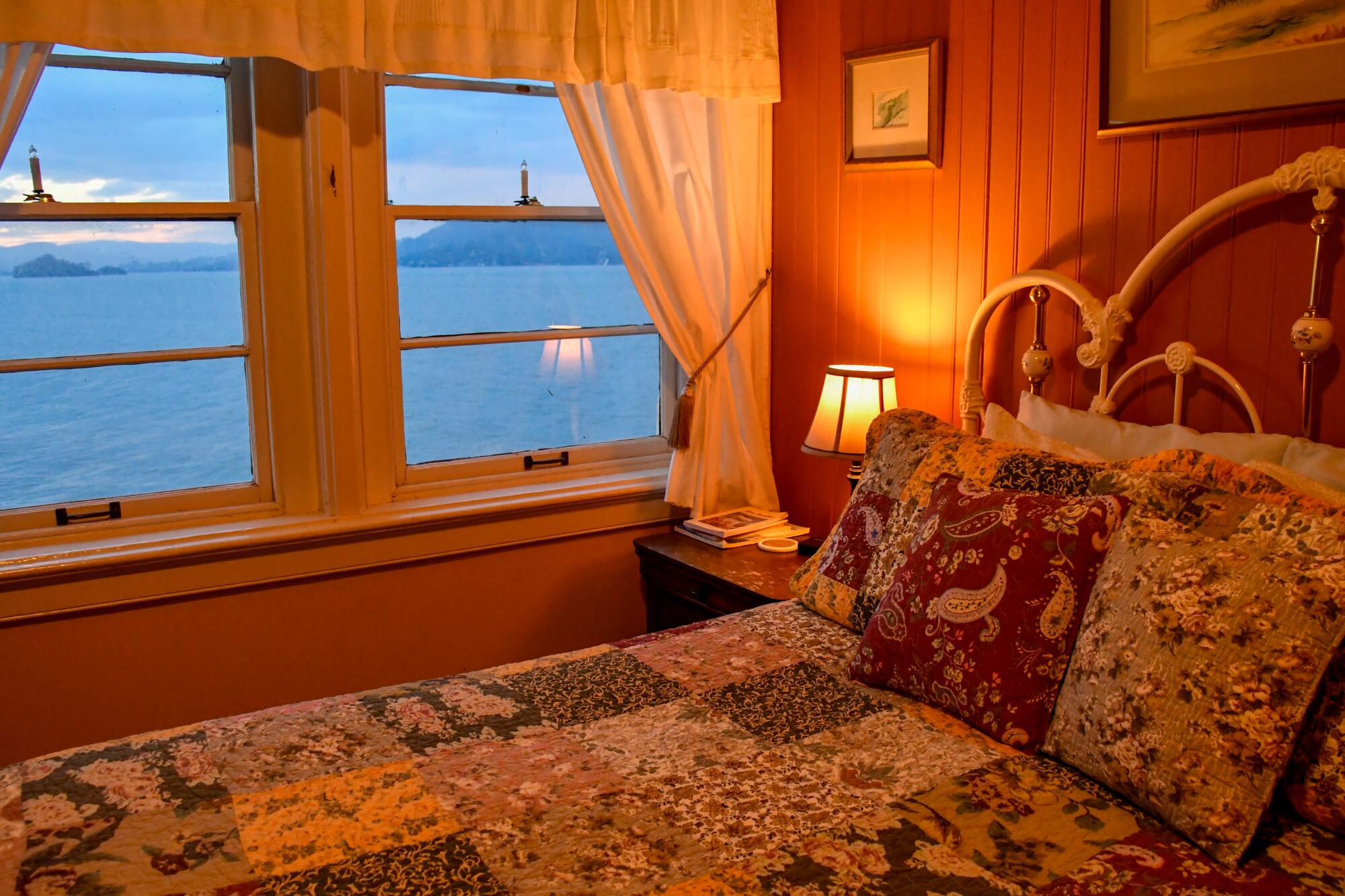
Whether you rent one room or all, Champagne and hors d’oeuvres are served in late afternoon — outdoors if the weather is mild. Then, in the spell before the bell rings for dinner in the dining room, you have time to roam.
You can head upstairs, where there’s a wood-burning stove and a room full of puzzles, board games and a guitar. There’s a horseshoe pitch on one side of the fog signal building. The cellphone coverage is fine, but there’s no Wi-Fi, no landline, no hot tub.
So you do what they do in the L.L. Bean catalog: Stare meaningfully at the the swelling sea, the ferries and barges puttering past, the birds that perch on West Brother, the next island over. Farther away, you have the Richmond-San Rafael Bridge and the distant San Francisco skyline. In winter, clouds and fog permitting, you see the sun set behind Mt. Tamalpais.
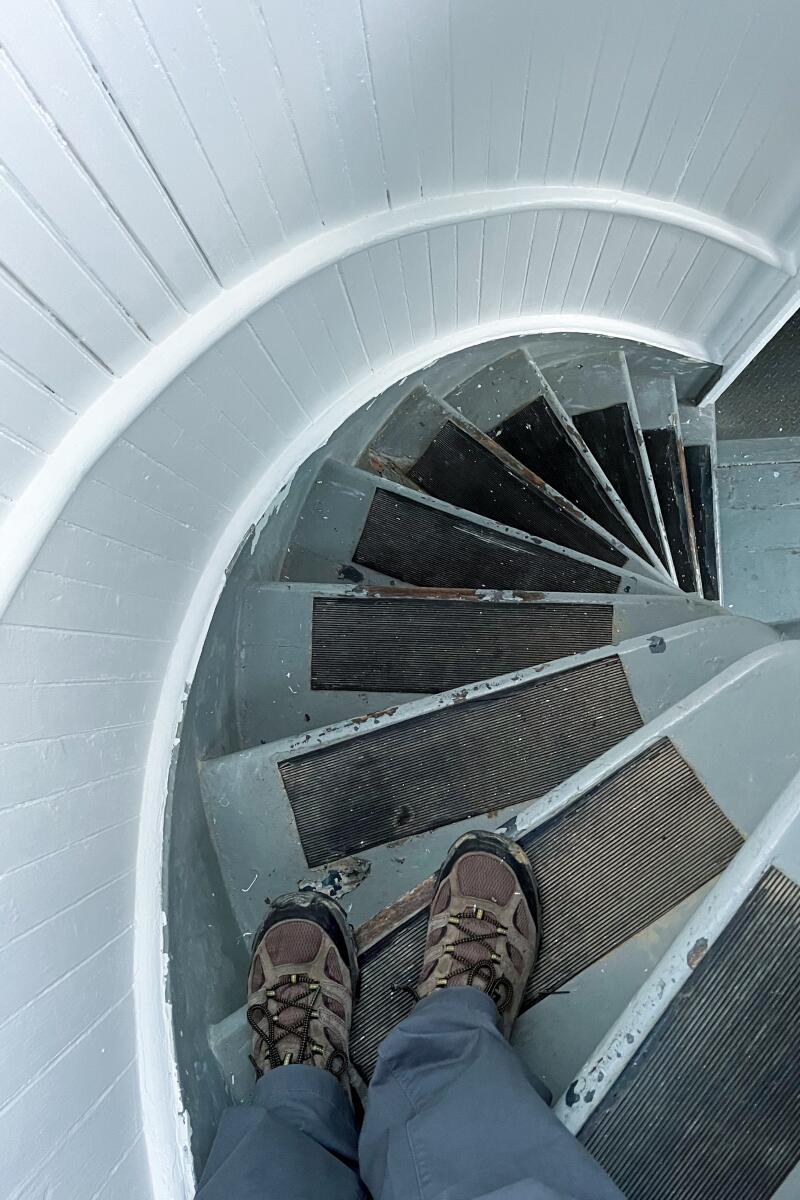
(Christopher Reynolds / Los Angeles Times)
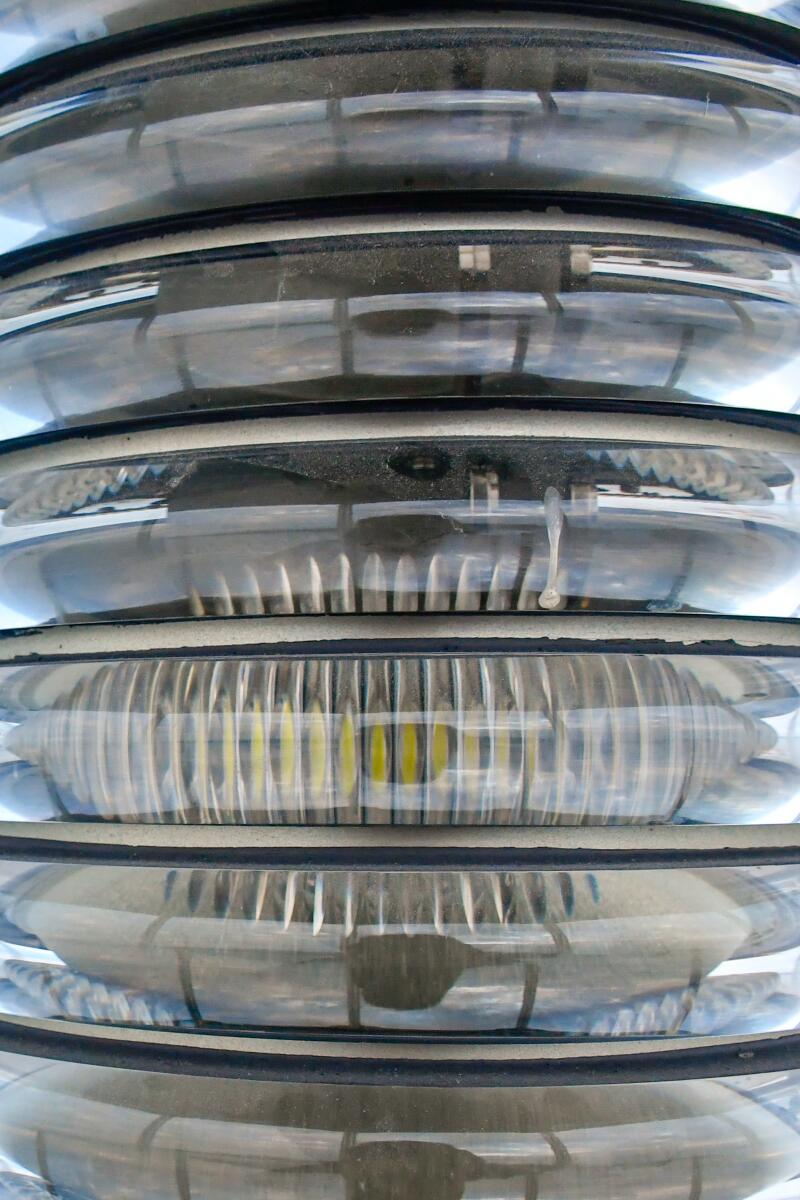
(Christopher Reynolds / Los Angeles Times)

After dark, I climbed the spiral staircase to the widow’s walk and stood by the pulsing beacon, which felt forbidden but isn’t. Then I dipped into a gift-shop copy of “East Brother: History of an Island Light Station” by Frank Perry, and learned the following:
- To put a lighthouse on the domed stone island, 19th century workers dynamited rock to flatten the top. Then they laid concrete sloping toward a spherical cistern in the middle of the island, to collect water. That’s still the water storage system, and it’s why the innkeepers must hoard their fresh water.
- Beneath the main house’s stick-and-frame wooden exterior, it’s a brick building, which makes it more stable, warmer and quieter in the wind.
- The house was completed in 1873, but the lighthouse wasn’t illuminated until March 1874.
- In the old days, keepers rowed three miles across the bay to buy provisions at San Quentin, then rowed back, occasionally while drunk. In his January 1883 journal, keeper Charles F. Winsor complained that his assistant Mr. Page “took the mail over to San Quentin, returned drunk.” And then a month later: “Mr. Page went for mail and stores, drunk, no mail.” Soon after, Mr. Page departed the island.
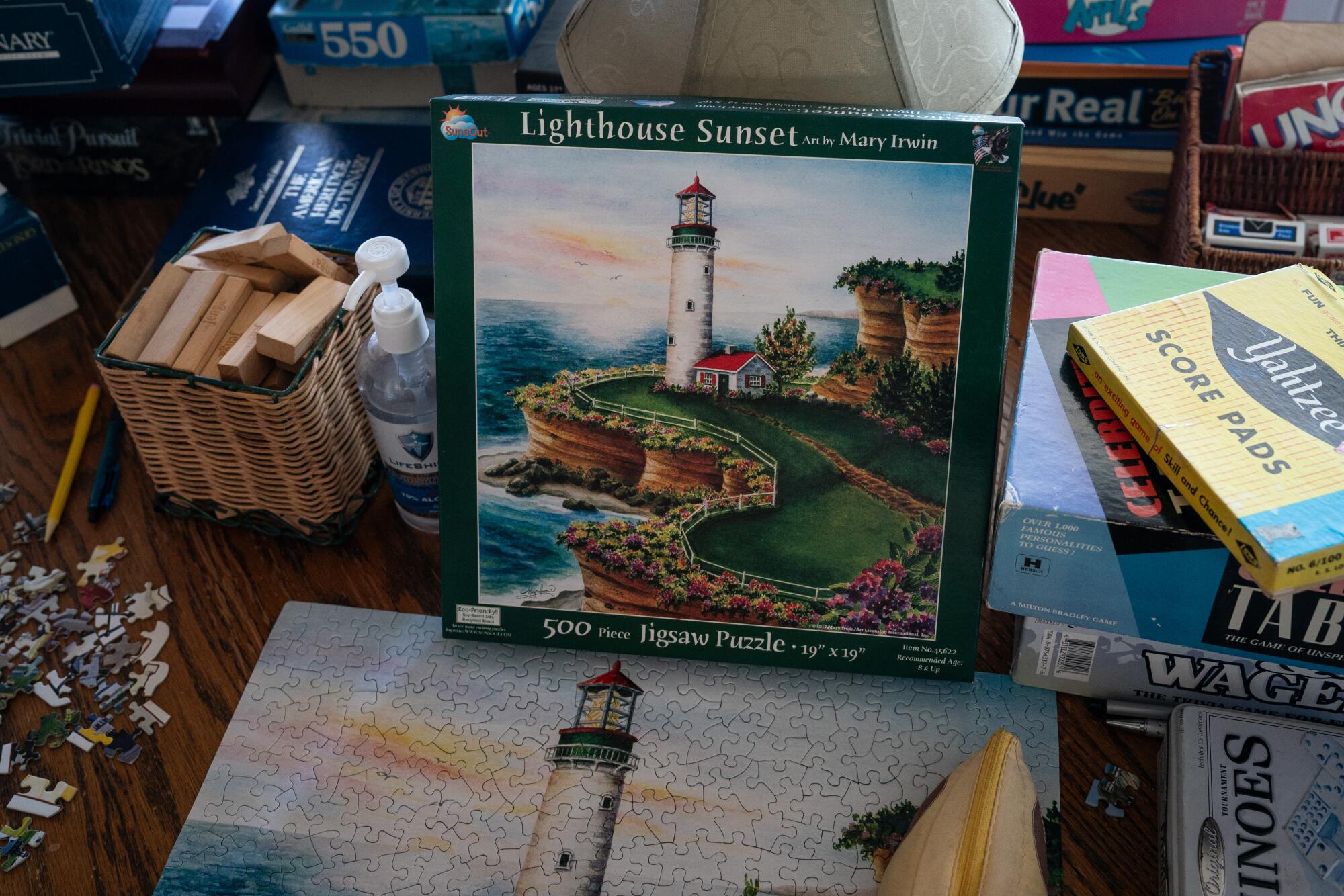
Now the keepers live in the smaller structure next door to the main building. They typically serve a two-year contract, then move on.
After dinner — a four-course event that on my night included tomato bisque, strawberry almond salad, salmon with remoulade, potatoes Dauphinois, roasted asparagus and New York cheesecake — the Elmores tell me how they’d arrived here.
Until early in 2023, they were living in Fairport, N.Y., along the Erie Canal outside Rochester. Charity Elmore, 56, was a project manager in high-tech. Dre Elmore, 57, had spent decades in publishing, then built a second career of maritime jobs, earning a Coast Guard master captain’s license for vessels up to 100 tons. He also liked cooking.
They were both ready for a big move, and and were chosen from more than 1,000 applicants for the East Brother gig. They started in March.
Charity: “You don’t find too many captains that are that good at cooking.”
Dre: “I’m the only 100-ton captain in the world that made three soups on Thursday.”
Charity: “Probably. There’s no data to back that up.”
Is it a dream job?
“It’s a lot of work,” Dre said, “but it’s definitely worth it to live out here.”
“It’s like a living museum,” Charity said.
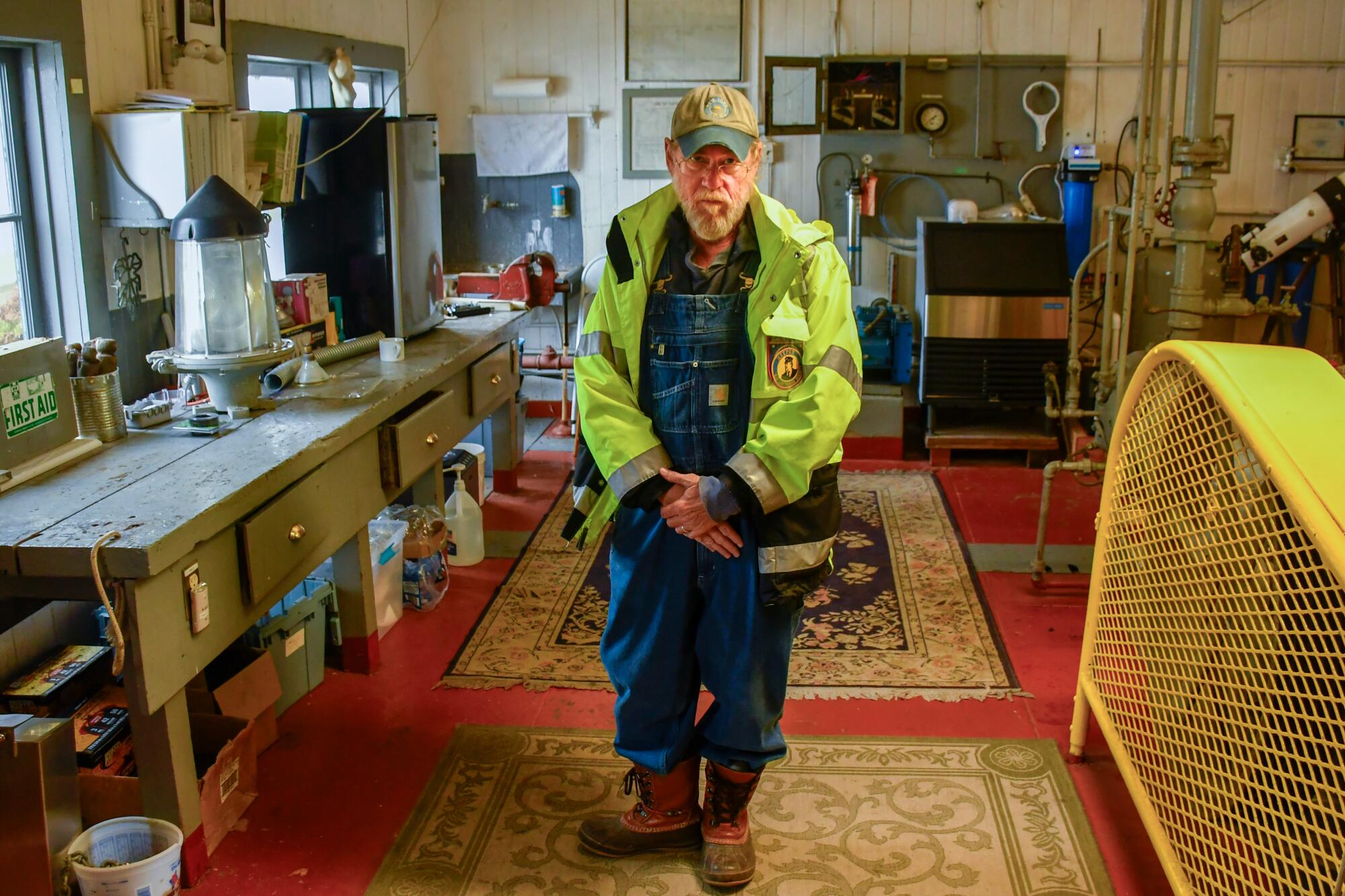
What you see and hear overnight
That night it rained and the light station’s modern foghorn sounded every 30 seconds, as it routinely does from October to April. But it’s a mellow sound, like the call of an owl from across the street. Though the inn supplies earplugs, I was never tempted to reach for them.
As for stray lighthouse beams, I saw none. After all, that rotating beacon up above is designed to scatter light far and wide, not straight down. I slept deeply.
In the morning, guests get a hearty breakfast. Before the 11 a.m. boat ride back to the mainland, Dre Elmore likes to show off the retired Fresnel lens and the array of still-working machinery in the fog signal building.
The machinery is fascinating. But the payoff for me came when he demonstrated the station’s rare 1934 diaphone fog signal, which sounds off with two descending blasts, basso profundo. When those bass notes sound, it won’t matter whether you’re in pirate mode, L.L. Bean mode or lighthouse geek mood. All your molecules will vibrate. In a good way.
More to Read
Sign up for The Wild
We’ll help you find the best places to hike, bike and run, as well as the perfect silent spots for meditation and yoga.
You may occasionally receive promotional content from the Los Angeles Times.
